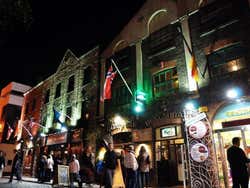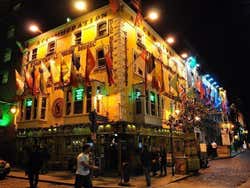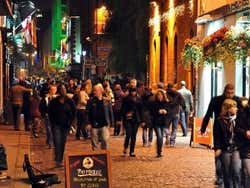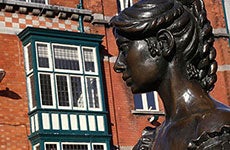
Temple Bar
Temple Bar, situated in central Dublin, is a magnetic and charming area overflowing with typical Irish pubs and international restaurants.
Temple Bar is Dublin’s cultural heart and one of the best districts to visit during the day, as well as at night when the bars and taverns are full of life. Bound by Dame Street and the River Liffey, its narrow, cobbled streets and charming architecture preserve the city’s pure essence.
History of Temple Bar
The area is thought to be named after Sir William Temple, who built his family house here at the beginning of the 17th century.
During the 19th and 20th centuries, the neighbourhood was extremely rundown. It had numerous neglected buildings and was Dublin’s prostitution hub. In the late 20th century, the land was sold to make a central bus station, attracting a lot of small businesses and citizens to the area. Finally, the bus station project was abandoned but the area continued to prosper.
Temple Bar began to develop into a thriving area, especially after 1991, following Dublin's election as the European Capital of Culture.
Temple Bar at present
Currently, Temple Bar is one of the capital’s most appealing neighbourhoods. It combines various cultural venues with dozens of bars, restaurants and typical Irish pubs.
The area is famous for its lively nightlife, where both locals and visitors come together to enjoy a pint of stout and other classic Irish drinks.
During the day, Temple Bar houses various open-air markets like the Food Market and the Book Market. The streets are also packed with art galleries and alternative clothing boutiques.



Transport
Any bus that goes to the city centre
Nearby places
National Wax Museum (173 m) Dublin City Hall (273 m) National Leprechaun Museum (300 m) Dublin Castle (346 m) Trinity College Dublin (350 m)

